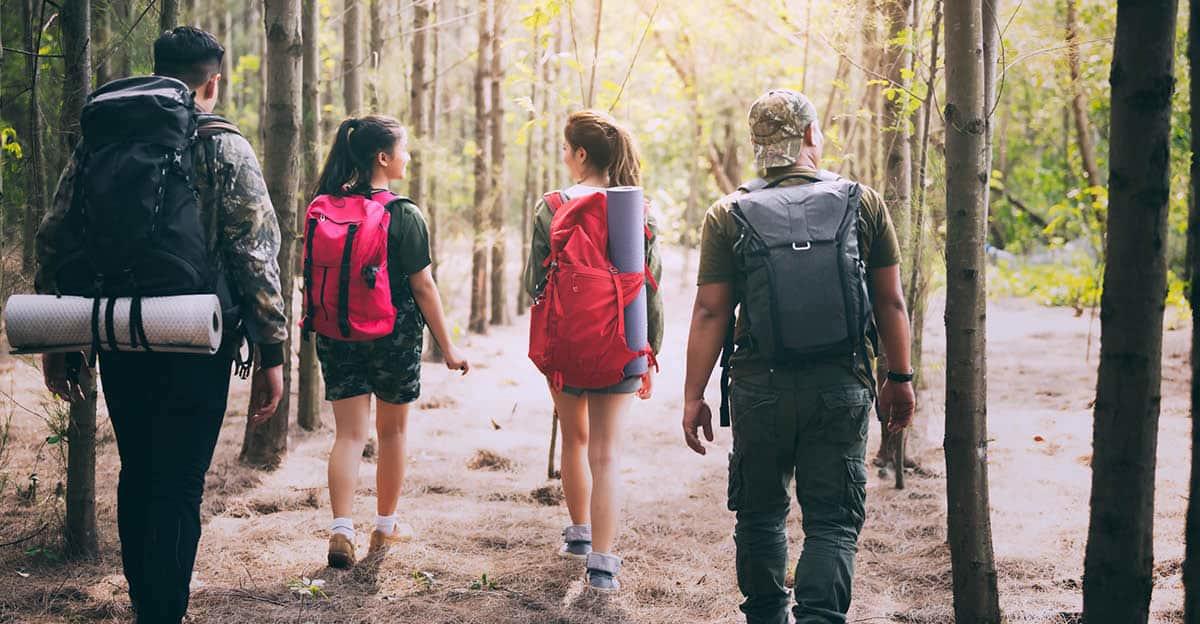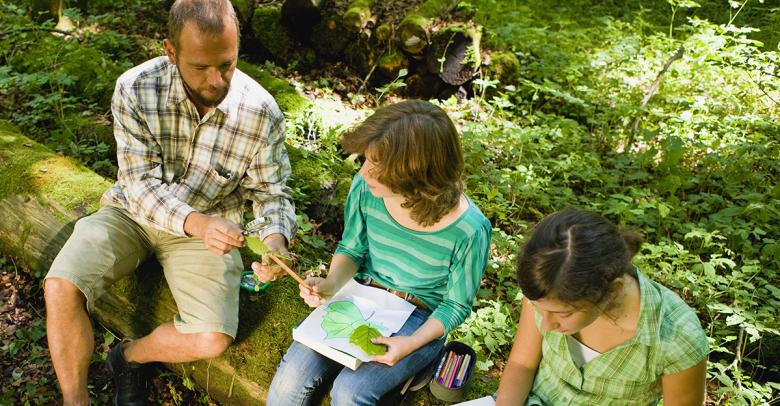Learning basic wilderness survival skills isn’t about the likelihood that students will have to use them. It’s about exploring foundational concepts that give students self-confidence and knowledge to use in future decision-making. From building a fire and shelter to obtaining clean water, students can engage in these hands-on concepts inside or outside the classroom through a wilderness survival lesson plan and other activities.
Four Key Factors for Wilderness Survival
When in a wilderness survival situation, there are four main priorities to be considered above all else: attitude, water, shelter, and fire/heat. With a calm and focused attitude and the remaining three basic needs accounted for, the average person could survive many days without food. Give students specific examples of what it means to secure each of these priorities.
Attitude
Remaining calm while you plan how to survive in the wilderness is the most important success factor. The S.P.E.A.R acronym is used to help remember that you should stop, plan, execute, assess, and re-evaluate while working through basic survival skills and techniques.
Water
Dehydration is a very serious concern when in a survival situation. Anyone venturing into the wilderness should be carrying water with them. The amount needed depends on how many clean water sources can be found along the hiking path. Drinking contaminated water is also very dangerous.
If you were to run out of water, there are several different ways to attain and purify it so that it is safe to drink. Water can be purified via chemical treatment, filtration, or boiling.
Shelter
Direct exposure to the elements can decrease the chances of survival in a wilderness survival situation. It’s important to find or create a shelter that takes into account the following factors: location, insulation, and heat source.
Natural shelters like caves exist, but the most realistic shelter to construct would be from debris in the area.
Fire
Even though you can survive without fire, it is one of the most useful tools for increasing chances of survival. Fire can be used to warm your body, dry wet clothes, cook food, and boil water. There are several ways to start a fire (lighter, matches, flint, and steel) but creating a fire in poor weather conditions can be very difficult.
Practicing different fire-starting techniques in differing environments and circumstances is important to survival in the wilderness.
Wilderness Survival Lesson Plan or Group Project
Once you’ve covered the 4 important factors to survival in the wilderness, give students a scenario that includes an environment, climate, and a list of tools they have along with them. Ask them to research their environment and work through the following discussion questions.
Example Scenario:
- Environment: Wisconsin Northwoods
- Weather/Climate: Late autumn – 30-50 degrees – Possible light rain showers at night
- Tool Inventory: 2 Liters of water, 3 freeze-dried meals, lighter, warm jacket, backpack
- Days to survive: 5
In the above example, students would have to consider what types of debris and materials would be available to them in the Wisconsin Northwoods, what type of shelter and fire they must build based on the weather, and how to find and ration food and water to survive for 5 days.
Water: Survival Discussion Questions:
- How many days can I survive with the water I have already?
- Where might I find a source of water?
- How will I attain more water and purify it so that it is safe to drink?
Shelter: Survival Discussion Questions:
- What type of shelter will best protect me from the elements?
- What types of natural debris might I find in my environment?
- How will I stay warm at night in my shelter?
Fire: Survival Discussion Questions:
- What tools will I use to build a fire?
- What type of campfire will help me to survive in my environment?
- How will I keep my fire going/find things to burn?
Once they’ve finished discussing, have students create a plan for survival and present how they would set up their campsite. They may choose to use arts & crafts tools to build a 3D model, draw a detailed image, or create a PowerPoint presentation of their survival site.
After their survival plan is presented, have the class offer comments or questions to the team about their plan and any factors they may not have considered.
Consider taking the discussion and planning portion of this lesson plan outdoors to inspire students to think about the different ways their environment impacts the way they would survive in the wilderness.
Check out community nature centers and Parks and Recreation teams that may be able to facilitate a more hands-on learning experience for students. Many offer locations where students can learn more about building shelters and learning other survival skills with the support of a wilderness educational team.
More STEAM Classroom Activities & Lesson Plan Ideas
If you’re looking for more great ways to engage your students and encourage them to explore STEAM concepts and critical thinking, be sure to visit the STEAM/STEM topic page to find more unique and exciting ideas. The School Specialty online store is stocked with the supplies you need to make any lesson plan memorable.






Leave a Reply